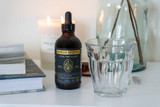How to Restore Vitamin D Levels: Expert Guidelines Explained
Effective Strategies for Vitamin D Supplementation

As discussed in our article on Vitamin D, SHBG, and Testosterone, maintaining optimal vitamin D levels is essential for bone health, endocrine function, immune support, and overall vitality. Adequate vitamin D intake ensures a foundation for these critical areas of wellness.
While the Institute of Medicine (IOM) recommends a conservative 600 IU of vitamin D per day for adults (increasing to 800 IU for those over 70), the Endocrine Society suggests a more robust daily intake of 1,500–2,000 IU, with a safe upper limit of 10,000 IU. For many, the key question is how to effectively raise low vitamin D levels.
The strategies outlined below are based on the Endocrine Society's guidelines, which emphasize the importance of working closely with healthcare providers to tailor supplementation plans. Various factors can impact vitamin D absorption, including certain medical conditions and medications. In particular, conditions such as granulomatous diseases, rare genetic disorders, and enzymatic polymorphisms may increase the risk of vitamin D toxicity, requiring more nuanced management.
Effective Approaches to Raising Serum Vitamin D Levels
According to the Endocrine Society’s Practice Guidelines, the following protocols are recommended for addressing vitamin D deficiency:
Vitamin D Treatment and Maintenance by Age Group |
|||
|---|---|---|---|
| Age Group | Treatment (D2 or D3) | Duration | Maintenance Dose |
| 0 - 1 year | 2,000 IU/day or 50,000 IU/week | 6 weeks | 400 - 1,000 IU/day |
| 1 - 18 years | 2,000 IU/day or 50,000 IU/week | 6 weeks | 600 - 1,000 IU/day |
| 18+ years | 6,000 IU/day or 50,000 IU/week | 8 weeks | 1,500 - 2,000 IU/day |
For individuals with impaired vitamin D absorption due to conditions like malabsorption syndromes, or those on glucocorticoids, anti-seizure medications, or certain antiretroviral drugs, the Endocrine Society recommends the following higher dosage protocols:
High-Dose Vitamin D Treatment Plan |
||
|---|---|---|
| Treatment (D2 or D3) | Duration | Maintenance Dose |
| 6,000 - 10,000 IU/day | 6 weeks | 3,000 - 6,000 IU/day |
It is crucial to collaborate with your healthcare provider when determining the right dosage, especially in cases of impaired vitamin D metabolism. The guidelines assure that “toxic levels are unlikely with intakes below 10,000 IU/day,” making this a safe and effective approach to supplementation.
Dietary Sources of Vitamin D
For those looking to incorporate vitamin D into their diet, we recommend exploring our detailed article on Vitamin D, SHBG, and Testosterone. While dietary intake alone may not always suffice, it remains an important component of maintaining healthy vitamin D levels.
The Role of Sun Exposure in Vitamin D Synthesis
Sun exposure is the most effective way for the body to naturally synthesize vitamin D. However, without consistent sunlight, particularly during winter months or in higher latitudes, it can be difficult to maintain adequate levels through diet alone, making supplementation essential for many.
While beneficial, unprotected sun exposure carries the risk of skin cancer, especially melanoma. For those living above 33 degrees latitude in the Northern Hemisphere, winter sun exposure is often insufficient for vitamin D synthesis, further underscoring the need for year-round supplementation and sun protection strategies.
Site Disclaimers
General Guidence
The content on this site is provided for educational and informational purposes only and should not be construed as medical advice. Always consult a qualified healthcare provider before making changes to your diet, lifestyle, or health regimen, particularly if you are pregnant or nursing, under the age of 18, managing allergies or known sensitivities, or living with any medical conditions.
At RAW Forest Foods, your safety is our priority. Please note that our products are dietary supplements, not medications. The following disclaimer applies:
* These statements have not been evaluated by the Food and Drug Administration. These products are not intended to diagnose, treat, cure, or prevent any disease.
Ingredient Transparency and Allergen Awareness
We are committed to providing transparent ingredient information to help you make informed decisions. If you have or suspect you have allergies to any of our ingredients, we strongly advise against using our products, as allergic reactions can be severe.
Interaction with Medications
If you are taking any medications, consult with your healthcare provider before using supplements. Certain supplements may interact with medications, potentially altering their effectiveness or causing unwanted effects.
For more details, please review our full Terms and Conditions.






